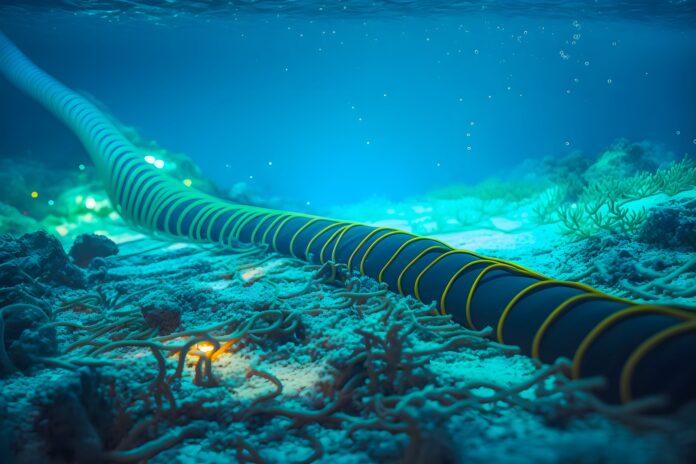Already hit by East coast outages in the Red Sea, the continent now suffers multiple cable outages on the West coast
At least four subsea cables running along the West African coast have failed or are suffering significant faults as operators across the continent scramble to secure capacity on unaffected cables. The outages are compounded by the fact that at least nine of the countries impacted only have a single cable running to them. Microsoft has confirmed the four cables impacted – WACS, MainOne, SAT3 and ACE – which the company said has reduced total capacity supporting its regions in South Africa.
The latest faults have reportedly occurred close to the Ivory Coast near Abidjan and have an eerie similarity to the cables in the Red Sea incident traversing the seabed, which was recently bottom trawled by a crippled ship’s anchor, cutting four cables – Seacom, TGN, AAE-1, EIG. The resultant cuts had an estimated 25% impact on traffic.
According to the Encyclopaedia of the World’s Coastal Landforms, Ivory Coast’s concave south-facing coastline is bordered by a narrow continental shelf: the 120 m isobath, below which the slope plunges to abyssal plains, is only 10 nautical miles from the coast off Abidjan and reaches a maximum of 20 nautical miles off Sassandra. The narrow shelf is interrupted only at one point, off the Vridi canal, where the submarine canyon of the Trou sans fond, which probably follows a fault line, begins immediately offshore.
Depending on where the cables run, this canyon may be the culprit if there was a rockslide like the Congo Canyon incident last August. However, Ivory Coast has not had an earthquake in the past year so a typical trigger event would typically need to be river mouth flooding.
Microsoft told South African customers: “We have determined that multiple fibre cables on the West Coast of Africa — WACS, MainOne, SAT3, ACE — have been impacted which reduced total capacity supporting our regions in South Africa. In addition to these cable impacts, the ongoing cable cuts in the Red Sea — EIG, Seacom, AAE-1 — are also impacting capacity on the East Coast of Africa. This combination of incidents has impacted all Africa capacity – including other cloud providers and public internet as well.”
Seacom confirmed it has redirected customer traffic onto the Equiano cable after its West African Cable System services were down. Vodacom posted on Twitter “Certain customers are currently experiencing intermittent connectivity issues due to multiple undersea cable failures affecting SA’s network providers, including us. We apologise for any inconvenience caused.”
Equinix company MainOne confirmed the fault on the MainOne network and outage impacting multiple cable systems. In a statement it said: “We are working with cable systems that are not affected by this incident or previous outages to secure restoration capacity and our technical team is working assiduously to begin the restoration of services, subject to availability of capacity and service configuration specifics. We will also provide incremental updates on the root cause and efforts to repair the submarine cable as soon as those details become available.”
Cloudflare logged faults moving north to south
Internet firm Cloudflare said in a blog post that major internet disruptions were ongoing in Gambia, Guinea, Liberia, Ivory Coast, Ghana, Benin and Niger – and a total of 11 countries have been impacted. It added that there seemed to be a pattern in the timing of the disruptions, impacting from the north to the south of Africa.
It began south of Senegal, with The Gambia, Guinea, and Liberia experiencing disruptions around 05:00 UTC. In The Gambia and Guinea, the disruptions lasted about 30 minutes, while in Liberia, the disruption has lasted more than 12 hours. Moving south, around 07:30 UTC, disruptions were observed in Côte d’Ivoire and Ghana. Niger, a landlocked nation in Central Africa, experienced a disruption at 09:15, lasting just over two hours. Nigeria, Benin, Cameroon, and Togo followed and face ongoing disruptions.



